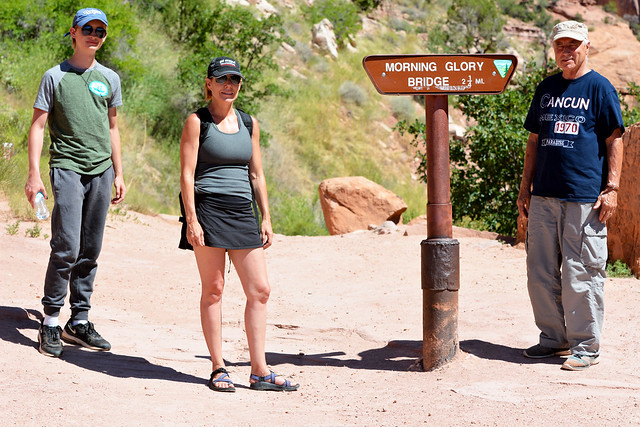Grandstaff Canyon Wilderness Study Area
Values
Grandstaff Canyon includes a perennial stream within a canyon bordered by sheer walls of Navajo sandstone. Morning Glory Natural Bridge, located just outside of the WSA on State Land, is the main destination for hikers. A ribbon of riparian vegetation follows the stream within the canyon. Above the canyon, there is a sparse covering of pinyon-juniper vegetation and large expanses of barren Navajo sandstone domes and fins.
Visitation Information
Located northeast of Moab, near mile marker three on Utah State Highway 128, the Grandstaff trailhead and parking area provides access to the lower portion of the canyon. A very popular well-maintained hiking trail leaves from the parking area, and traces 2.2 miles to Morning Glory Natural Bridge (just outside the actual WSA). Poison ivy grows along the trail in places, but is easily avoided. The Sand Flats Road provides access to the upper portion of the WSA. The canyon, nearby campground, and trailhead were named in honor of William Grandstaff, a mixed-race pioneer important to local history as one of the first settlers in this area. Born in Alabama in 1840 of Creole-African American descent, records indicate he homesteaded and ran cattle in the canyon from 1877 to 1881. There is an interpretive sign at the trailhead briefly describing his life.
Visitor Advisory
Visitors should come prepared for backcountry conditions and adequately prepare for their trip. Knowledge of weather, terrain, and physical conditions can help ensure safety. Parking at this popular trailhead can fill early during the spring and fall.
Flickr Album

